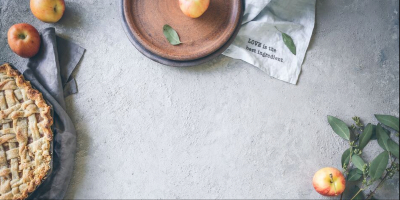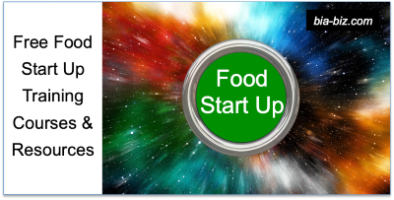Innovations and Trends In Food Product Packaging: Tips, Principles, and Considerations (Guest Blog)
Have you ever bought an item simply because of the way the packaging looks? Many of us do! In fact, how merchandise appears at the point of purchase is one of the more compelling factors that draw consumers’ attention and sway their buying decisions. And food product packaging is no exception. This is why manufacturers have become increasingly creative as they search for novel and effective methods to present their edible offerings to their target markets. Next-generation packaging has indeed become one of the major growth drivers in the food industry.
In this blog post, we will unpack the latest trends in packaging solutions in the food industry, uncover its principles, and examine how manufacturers can incorporate the latest innovations to make their products stand out.
Trends in Food Product Packaging
Advancements in technology and evolving consumer preferences have triggered the rise of these popular trends in food product packaging:
1. Sustainable Packaging
The sustainability movement has gained significant traction to make a huge impact on the food industry. This has resulted not only in the adoption of organic agricultural principles but also in eco-friendly packaging. More and more individuals and groups are becoming aware of environmental issues and the urgency to turn things around for our planet and ourselves. Thus, there is increased pressure on companies to do their part in waste reduction. Today, many explore sustainable alternatives to traditional packaging, such as biodegradable and compostable materials.
2. Smart Packaging
Food safety practices are necessary to prevent foodborne illnesses and protect public health. Such measures include ways to safely ship temperature-sensitive items.
Here is where smart packaging comes into play. This innovation goes beyond traditional methods by incorporating cutting-edge technologies that enable environmental interaction. For example, some smart packaging models have time-temperature indicators, communicating if food has been exposed to unfavorable conditions and for how long. This can be crucial for food that needs to be shipped a long way from the manufacturer to the destination marketplaces. Other smart features are oxygen scavengers, antimicrobial coatings, and QR codes. All these help extend the shelf life of food products, improve food safety, and provide a better experience for consumers.
3. Customization
A third trend in the food packaging industry is customization. From personalized labels to unique packaging designs, companies are finding ways to cater to individual preferences and create a connection with consumers. Customization enhances product differentiation, boosting brand recognition and setting a company apart from the competition.
Principles of Good Food Packaging Design
When designing food packaging, here are some essential principles to take note of.
1. Functionality
The packaging should be fit for its intended use, offering protection, convenience, and user-friendliness. Some things to look out for are ease of opening, portion control, and resealability.
2. Branding
Well-designed branding in food packaging can effectively convey the brand’s identity and unique value proposition. Additionally, it can create an emotional connection with consumers. This can build brand relatability, relevance, consistency, and trustworthiness, as well as justify a higher price point.
3. Legal Requirements
The packaging should meet legal requirements regarding ingredients, weight, labeling, and nutritional information, among others. There are also safety and environmental regulations that manufacturers need to comply with. For instance, they must ensure that their food packaging meets safety standards to prevent contamination, spoilage, etc. They should also observe other ecological policies and guidelines, such as waste reduction, recycling, and proper disposal.
4. Aesthetics
The packaging should be visually appealing, catching the consumer’s attention and enticing them to purchase. Consider the following points:
- Does the packaging successfully use colors, graphics, and imagery to elicit an emotional response from the consumer?
- Is the typography easy to read without having to stick one’s nose into the packaging?
- Do the materials effectively communicate the product’s quality and value?
Considerations for Food Packaging
Additionally, there are several other important considerations that food manufacturers must keep in mind:
1. Shelf Life
Packaging must protect against contamination and oxidation, extending the product’s shelf life.
2. Transportation
It should also be constructed so that the packaging can withstand the rigors of transportation. This ensures that the product will arrive intact at its destination.
3. Consumer Experience
As mentioned earlier, packaging should be easy to open. But in addition, consumers should also be able to handle, store, and reuse the product without much fuss or difficulty.
4. Cost
Since businesses need to be profitable, all considerations like sustainability, consumer experience, and aesthetics must be balanced with the cost of packaging.
The Takeaway
By incorporating these tips, principles, and considerations, food manufacturers can create quality packaging that will benefit the consumers, the environment, and the companies or businesses.
Are you searching for a comprehensive collection of relevant food-related resources? Look no further than BiaBiz, a distinct platform solely dedicated to the food industry. They offer a vast selection of free training courses, training videos, and resource catalogs spanning the entire food supply chain. Their platform consolidates the latest and most valuable online content, ensuring you have access to fresh, high-quality resources whenever you need them. So, keep up to speed on the latest information and in-depth insights—visit their blog today!
About the Author
Jeanicka (Nicka) Rhey is an outgoing author, and is renowned for her wit and charm. Her curiosity and thirst for knowledge helped her become a fast learner in science, tech, literature & arts. She writes to share ideas and experiences, driven by a passion for writing.






